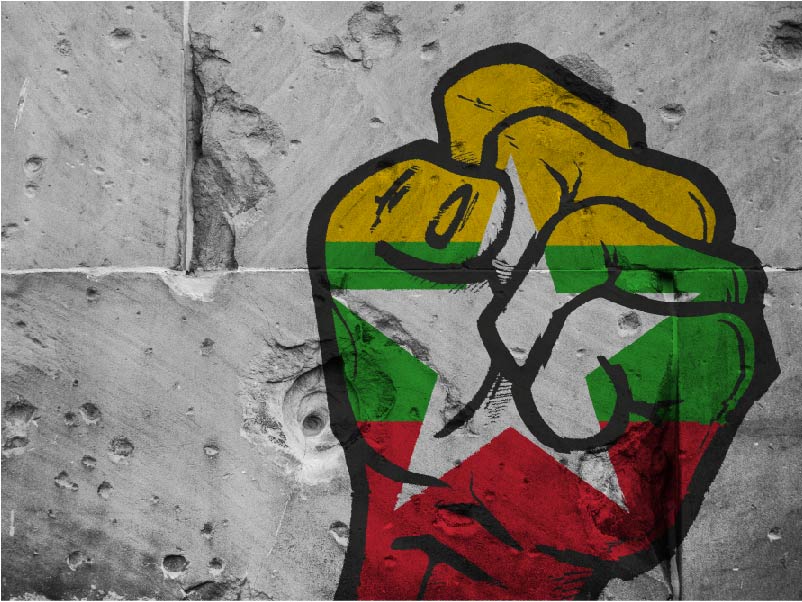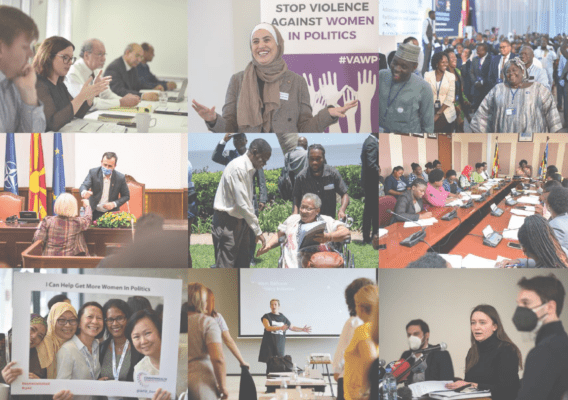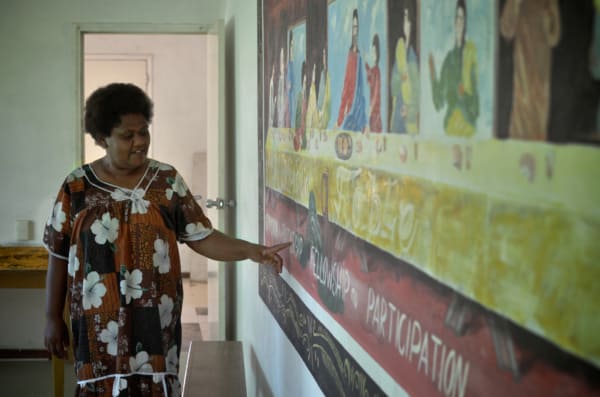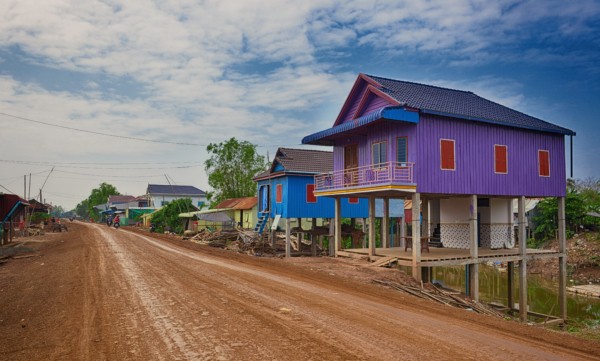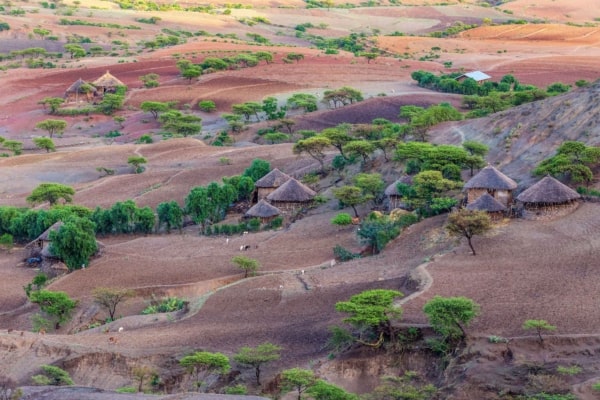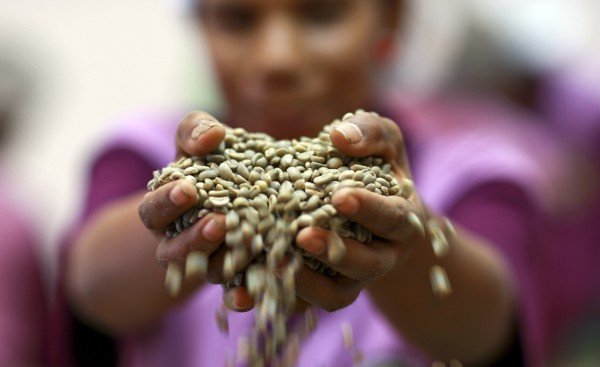Myanmar’s military coup has caused ripples of shock around the international development community. This includes a sense of consternation as to why (aside from recent weeks’ public rumblings of dissatisfaction by the military) the coup was not foreseen. But the reality is, it’s not unexpected that we don’t understand exactly why this coup has unfolded – in fact not understanding precisely why things are happening has been an ongoing feature of Myanmar’s dramatic story of transition over the last ten years.
One thing that is clear however, is that the power and flex of individual leaders – from both sides of the fence: civilian government and military – has been underestimated all the way along.
In 2012, when Myanmar’s then President Thein Sein oversaw a by-election that allowed Aung Sang Suu Kyi’s National League for Democracy (NLD) party to gain its first real foothold in government, there was both surprise and a heavy dose of incomprehension as to why this had come about. There hadn’t seemed to be a clear trigger for the shift, and whilst the opening up of a decades long military regime was welcomed enthusiastically by the international community, there was never really any understanding of what, in “the black box” of political decision-making, generated that seismic gear change that did so much to overhaul people’s lives there. A decade on, the understanding of why that same military has seized back power in a shock coup just hours before the new parliament was due to sit, is still blurry and indistinct. And if ever much of the black box of political decision-making was prised open, it’s now snapped firmly shut.
The reported humiliation of the military party, the Union Solidarity and Development Party (USDP), which expected to perform much better in the November 2020 general election than it did, is no doubt a factor. But it doesn’t explain much of why such a drastic retrograde step has been taken, particularly when the military itself still had the power of veto and 25% of parliamentary seats, and still controlled (and owned) swathes of the country’s resources. Nor does it seem to correspond to a long-term rational move in the world of strategic geopolitics: whilst the policy of non-interference in its member’s domestic matters by ASEAN will prevent many of its regional allies from directly criticising or punishing the new military regime, not all ASEAN members will play ball on this front and as the flurry of G7, EU and bilateral statements and urgent UN talks condemning the coup signal, Myanmar’s new military government is likely to lose the majority of its rich world allies.
One reason we know so little about why this coup d’état has taken place can be put down to relative myopia on the issue of leadership. For a long period of time, the good governance agenda of the 1990s, with its heavy focus on high functioning institutions as the kingmakers in political change, obscured the role played by leadership, whether that of a political leader, or of coalitions of interest, building change in and around institutional reform. And although the issue of leadership as a clear contributing factor to developing country reform has gained traction over the years, in Myanmar the role of powerful individual leaders seems to have been repeatedly underestimated.
On NLD front, it was assumed by the international community that whilst critical to the party’s transition to a fully-fledged government, Aung San Suu Kyi would not define it in totality. In fact, in her role as State Counsellor, Aung San Suu Kyi has come to eclipse nearly all other forms of progressive political symbolism in the country. There is no obvious replacement for the leadership of the NLD, and despite myriad development programmes targeted at spreading civic engagement, for many in Myanmar, democratic progress has continued to be embodied largely in the form of this one person. In addition, the NLD itself ran a tight ship that allowed little space for dissent – cementing the perception that power was concentrated in one figure – something that eventually, the military leadership has decided it would not tolerate, now or in the future (see the charges filed against Aung San Suu Kyi and President Win Myint which would remove any possibility of standing for office in the future).
And Aung Sang Suu Kyi isn’t the only lead role in this performance. It also seems that a motivation of pushing through the coup at this moment in time is to ramp up the power of the Commander in Chief, General Min Aung Hlaing, and give him a run at being in charge before he retires. The closed nature of Myanmar’s military being what it is, it was always a challenge to understand the politics of military leadership there, but not knowing what you’re dealing with, doesn’t mean it will go away.
In recent days, many have noted how quick the international community was to rush in, lift existing sanctions in 2012, and work with the then military government. It’s understandable that there was a desire to capitalise on that huge unexpected political change, but perhaps not enough care was taken in being alert to the uncertainties associated with not knowing how such a powerful agent as the military, dominated ultimately by one figure, might act.
Ultimately, a lot of this coup seems to be about individual agency: in both the power and choices of the military Commander in Chief, and the role played by the State Counsellor.
Without a crystal ball it is impossible to say what things would have looked like now if the country’s political playing field hadn’t been so totally dominated in the last five years by two such leaders. However, it does tell us that we need to understand much better the politics of leadership and how they influence and intersect with the institutional reform processes that form the backbone of development interventions, especially in difficult complex places such as Myanmar.
What now for Myanmar
Amidst the wave of political detentions, and the promise of a year-long state of emergency punctuated by another general election, which the military has announced it will call in the coming months, the international community will be looking at their limited set of options for what they can do next.
Aid suspensions are on the table (although the International Monetary Fund (IMF) looks unlikely to get back its $350 million loan made to Myanmar just days before the coup), as is the extension and deepening of existing sanctions already in place and targeted at individual military figures in response to their role in the wave of 2017 ethnic cleansing of the Rohingya.
But on these limited options, international actors will need to tread a careful balance between punishing people and punishing the military. Don’t forget, this is a country steeped in major humanitarian crises both in Rakhine, where 140,000 Rohingya Muslims still languish in camps so many years on from the violence that put them there, and in multiple conflict-affected areas around the country where long-standing wars around autonomy for many of Myanmar’s ethnic groups continue to play out.
And the dynamics of the coup are changing on a daily basis. Most disconcertingly, in response to the rapidly growing public protests against the week-old coup, the military has now begun to speak of the need for order and “disciplined democracy”, and unleashed tear-gas, rubber bullets and water cannons at the protesters. Whilst, for now at least, this will mean a continual recalibration of potential actions by the international community, in the long term there is going to need to be some hard thinking about how to engage with the new leadership in ways that don’t shore up a political settlement for the military. And that will need to involve more working out on what the role of political leader means in Myanmar’s troubling new political landscape.

